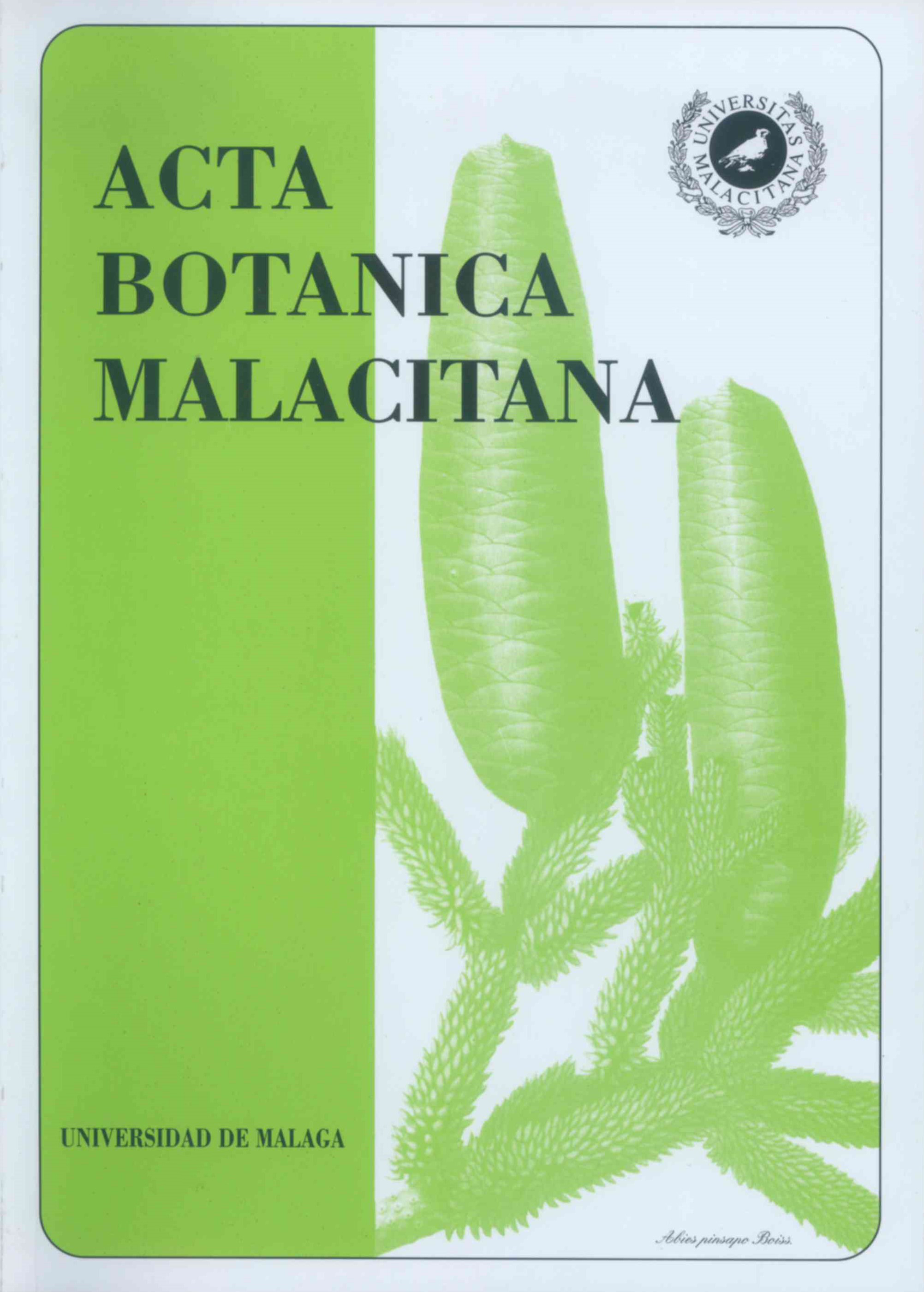Ana?lisis polinico de mieles de los Parques Naturales Los Alcornocales y Sierra de Grazalema.
DOI:
https://doi.org/10.24310/abm.v28i0.7268Abstract
RESUMEN. Análisis polinico de mieles de los Parques Naturales Los Alcornocales y Sierra de Grazalema. Seha realizado el análisis microscópico de 7 muestras de miel de los Parques Naturales Los Alcornocales y Sierra de Grazalema. Las muestras fueron proporcionadas directamente por los apicultores. Los resultados reflejan que el nectar de las flores es la principal fuente de miel en el territorio y que una muestra pertenece a la Clase I de Maurizio, cinco a la Clase II y una a la Clase V, siendo el número de granos de polen en 10 gr. de miel entre 17.500 y 1.592.700. Se han identificado 41 tipos polínicos, perteneciendo a 17 familias botánicas, resultando dos mieles monoflorales: una de girasol y otra de eucalipto.
Palabras clave. Girasol, Eucalipto, Melitopalinología, Parque Natural Los Alcornocales, Parque Natural Sierra de Grazalema.
ABSTRACT. Pollen analysis of honeys from the Natural Parks Los Alcornocales and Grazalema Range. Seven honey samples from different localities of The Natural Parks Los Alcornocales and Grazalcma Range have been studied by light microscopy. The results show that the nectar from flowers is the main honey source in the region and that one sample belongs to the Maurizio Class 1, five to the Class II and one to the Class V, with 17.500-1.592.700 pollen grains per 10 honey gram. 41 pollen types were identified belonging to 17 families, and two honey samples are unifloral: one of sunflower and one of eucalyptus.
Key words. Sunflower, Eucalyptus, Melissopalynology, Natural Park Los Alcornocales, Natural Park Grazalema Range.
Downloads
Metrics
Downloads
Published
How to Cite
Issue
Section
License
All information related to the licensing of published works in Acta Botanica Malacitana and copyright can be found in our Editorial Policy.







1.png)
